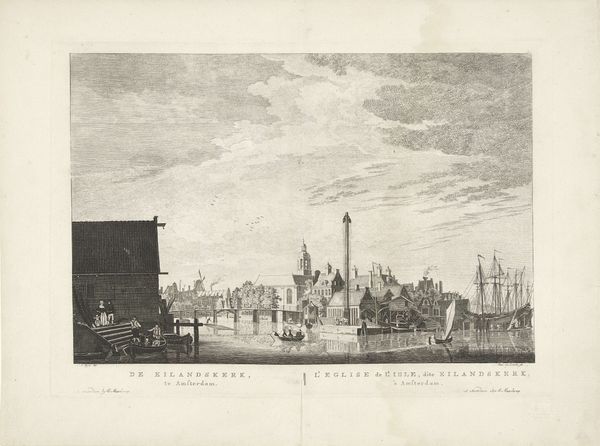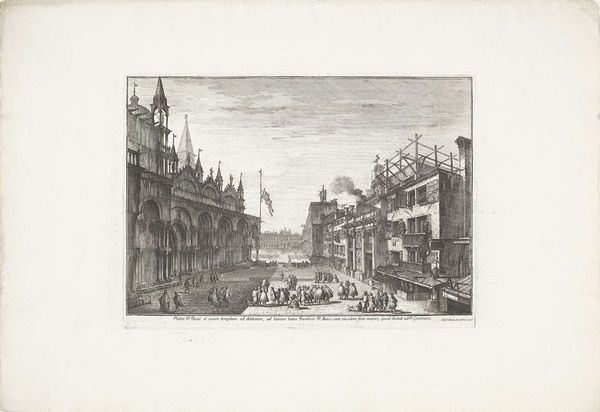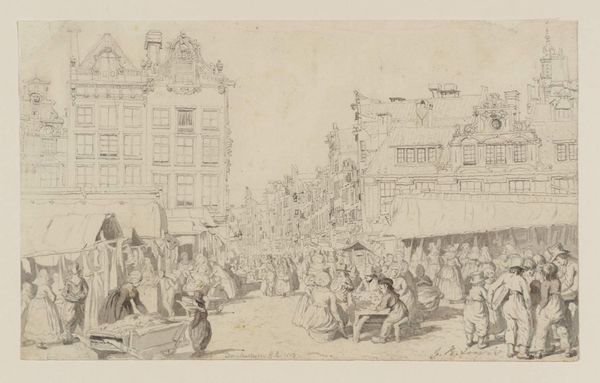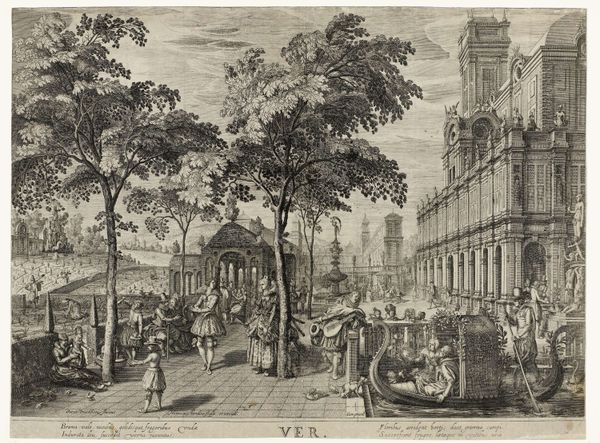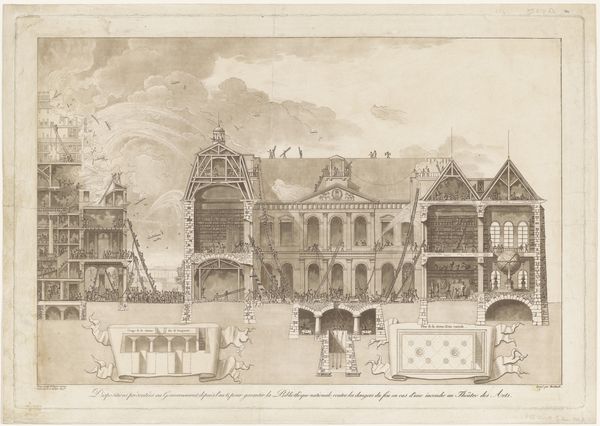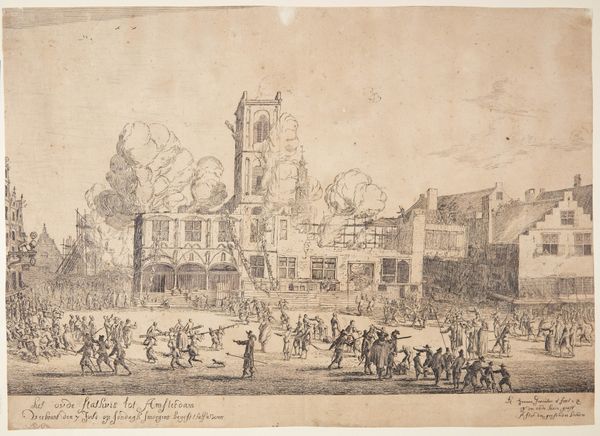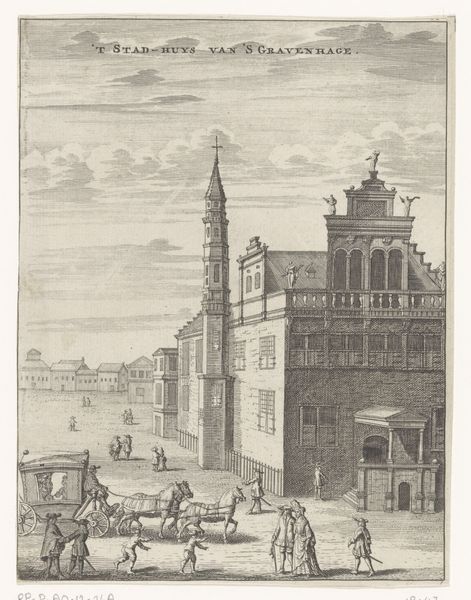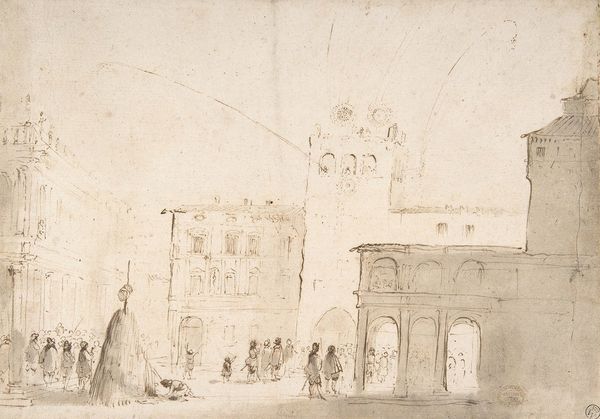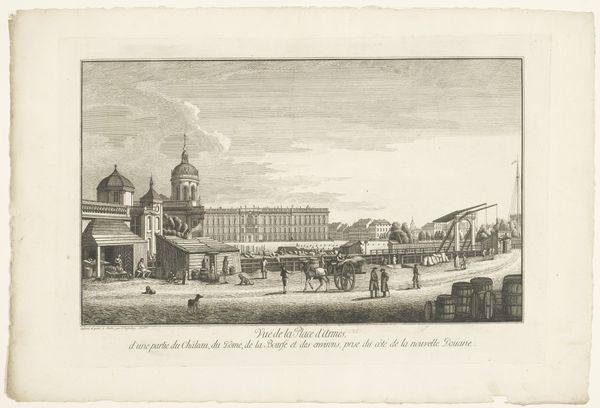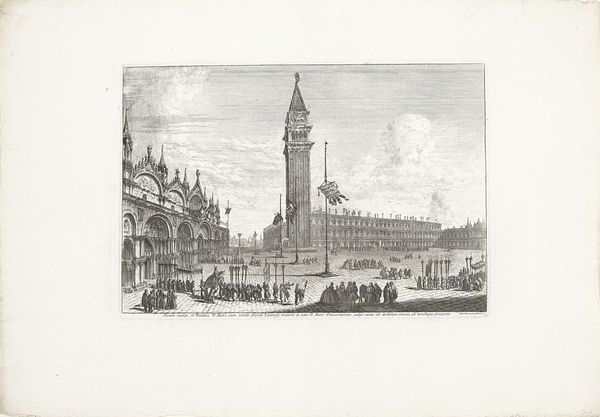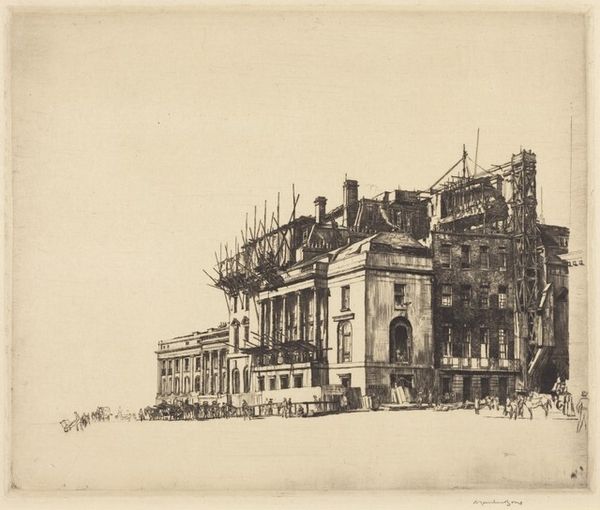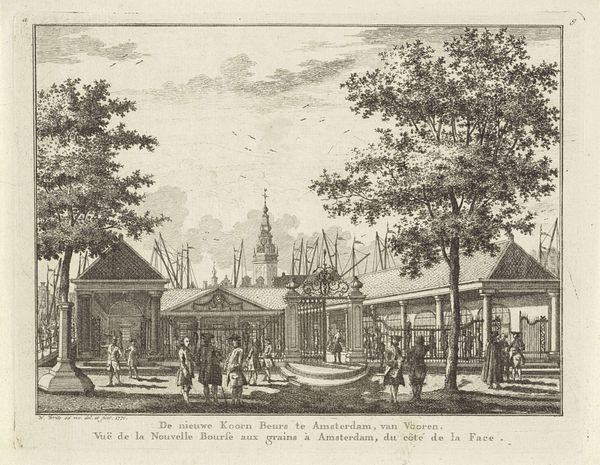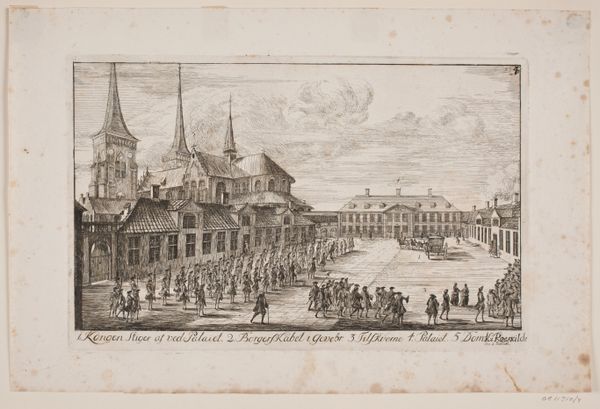
drawing, ink, pencil, architecture
#
drawing
#
neoclacissism
#
pencil sketch
#
landscape
#
classical-realism
#
ink
#
pencil
#
cityscape
#
history-painting
#
architecture
Dimensions: height 555 mm, width 875 mm
Copyright: Rijks Museum: Open Domain
Curator: Here we have Louis Jean Desprez’s "Promotion médicale," a pencil and ink drawing from around 1790, currently held in the Rijksmuseum collection. What strikes you first about this piece? Editor: Immediately, it’s the theatrical scale, but rendered in such muted tones. It feels like looking at a grand stage set just before the actors arrive, or perhaps a fading memory of a civic event. Curator: Exactly! Desprez, as an architect and artist deeply involved in stage design, frequently blurred the lines between real spaces and theatrical environments. His drawings offer fascinating glimpses into how civic rituals and displays of power were visually constructed during this period. Consider the historical context; it's right before the French Revolution. Editor: The architecture dominates, though the little figures gathered remind me of social stratification, the haves, and have-nots of society. Who has access to such architecture, the wealth it displays? Where are those whose hands built the monuments and dwellings portrayed? The figures are secondary, but I find them haunting, almost specters haunting grand locations and events. Curator: Absolutely. We see neoclassical architecture, a movement itself steeped in ideas of order, reason, and a harking back to an idealized past. This artistic decision tells us much about the tastes and aspirations of the elite commissioning these works. The choice of pencil and ink adds to this with an almost archaeological or documental tone. Editor: But what’s being "promoted?" It could be literally medicine or symbolically perhaps as civic institutions and ideology of progress that also excludes so many at the margins. Desprez invites us to look critically at what these imposing facades represent in a social and political context. It's as much about who's included as who's conspicuously absent from the frame. Curator: It's an image that certainly makes one question what power and wealth truly signifies. Editor: The city becomes both stage and spectacle, reminding us to ask: Whose stories are being told? And whose are being actively erased or never get the light? Curator: Ultimately, this piece asks how institutions legitimize themselvesso well-articulated!
Comments
No comments
Be the first to comment and join the conversation on the ultimate creative platform.
